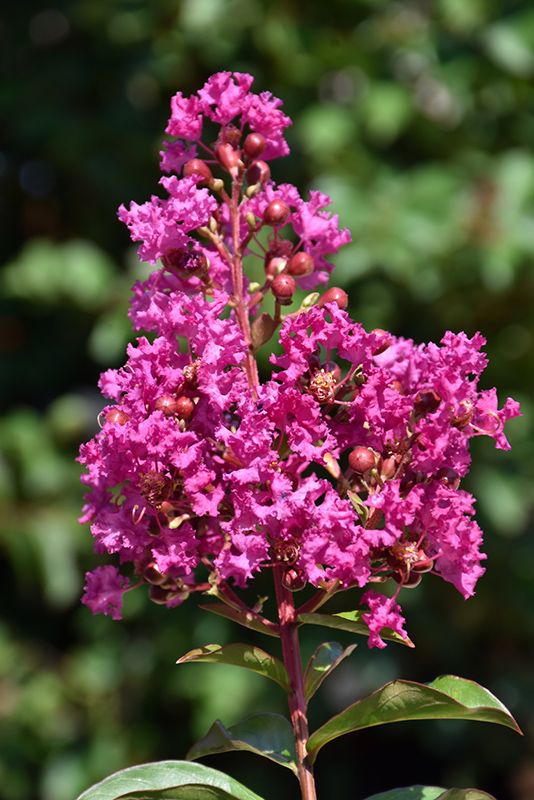Miss Sandra Crapemyrtle flowers Miss Sandra Crapemyrtle flowers (Photo courtesy of NetPS Plant Finder) Height: 15 feet Spread: 10 feet
Sunlight:
Hardiness Zone: 6b Other Names: Crape Myrtle, Crepe Myrtle Brand: Southern Living Description: This attractive ornamental shrub or small tree produces volumes of purple frilly blooms in summer, over lustrous, dark green foliage; a captivating focal point for the garden or border Ornamental Features Miss Sandra Crapemyrtle is clothed in stunning panicles of purple frilly flowers with hot pink overtones at the ends of the branches from early summer to early fall. It has attractive dark green deciduous foliage which emerges coppery-bronze in spring. The glossy oval leaves are highly ornamental and turn red in fall. Landscape Attributes Miss Sandra Crapemyrtle is a dense multi-stemmed deciduous shrub with an upright spreading habit of growth. Its relatively fine texture sets it apart from other landscape plants with less refined foliage. This is a relatively low maintenance shrub, and is best pruned in late winter once the threat of extreme cold has passed. It has no significant negative characteristics. Miss Sandra Crapemyrtle is recommended for the following landscape applications; Planting & Growing Miss Sandra Crapemyrtle will grow to be about 15 feet tall at maturity, with a spread of 10 feet. It has a low canopy with a typical clearance of 2 feet from the ground, and is suitable for planting under power lines. It grows at a fast rate, and under ideal conditions can be expected to live for 50 years or more. This shrub does best in full sun to partial shade. It prefers to grow in average to moist conditions, and shouldn't be allowed to dry out. It is very fussy about its soil conditions and must have rich, acidic soils to ensure success, and is subject to chlorosis (yellowing) of the foliage in alkaline soils. It is highly tolerant of urban pollution and will even thrive in inner city environments. This particular variety is an interspecific hybrid.
A NetPS Plant Finder tool
![]()
![]()
![]()
![]()
![]()
![]()
![]()
![]()
![]()
![]()
![]()
![]()
![]()

Phone:
(434) 525-3107 |
Email:
martha@rainfrostnursery.com |
Fax: 434-525-2062
Address: 2452 Bethel Church Rd, Forest, VA 24551
Business Hours:
Retail Nursery Hours are 9 to 5 Monday through Sat. | Closed Sundays




